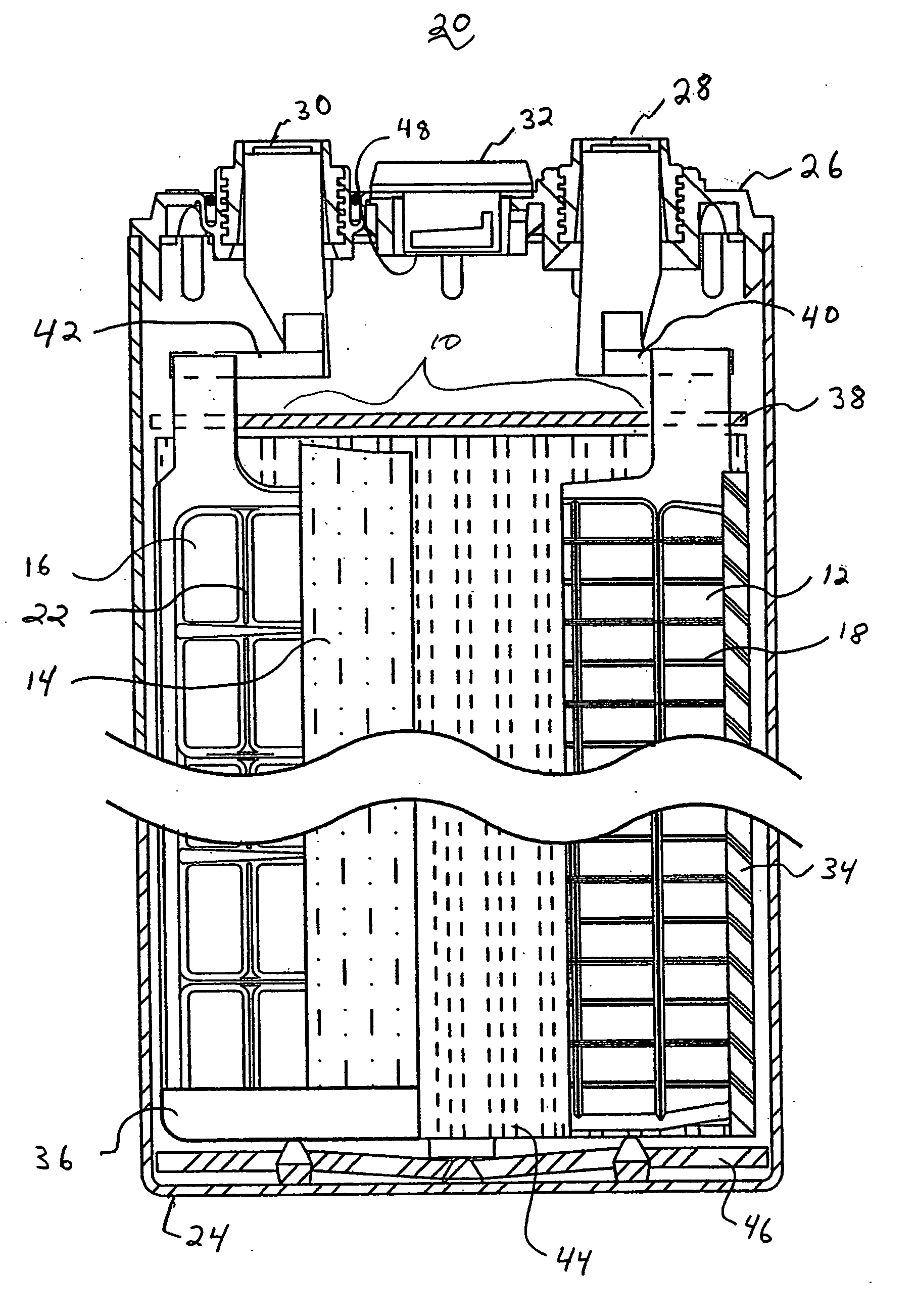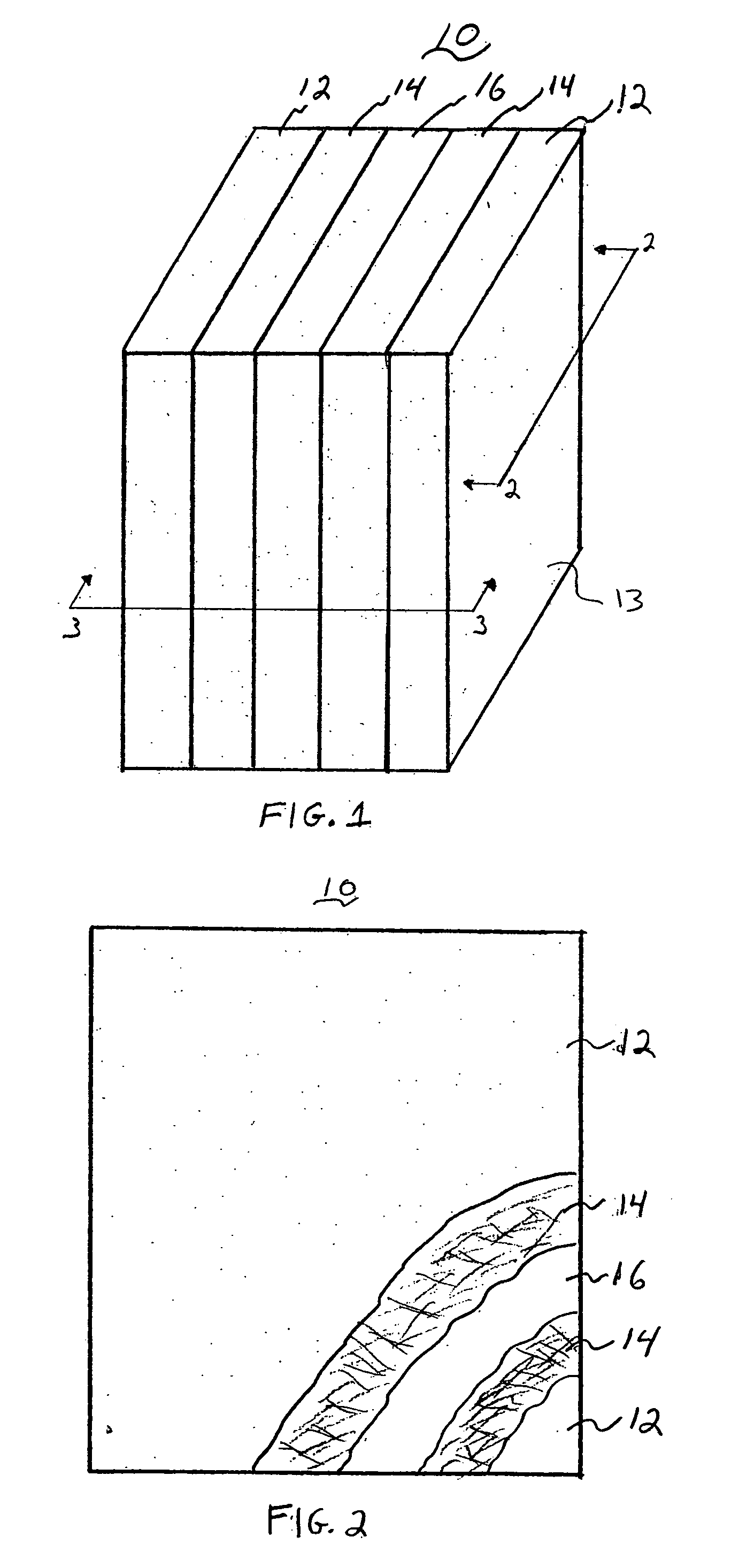Lead acid battery with gelled electrolyte contained within compressed absorbent separator mat and method of making the same
a technology of gelled electrolyte and separator mat, which is applied in the direction of non-aqueous electrolyte cells, cell components, sustainable manufacturing/processing, etc., can solve the problems of battery maintenance that requires water addition, battery overcharge, and loss of contact with electrodes
- Summary
- Abstract
- Description
- Claims
- Application Information
AI Technical Summary
Problems solved by technology
Method used
Image
Examples
example 1
[0068] Cells shown in FIG. 6 consisted of two different groups of cells. Control cells 1 and 2 both consisted of cells manufactured with tank formed plates that were dry charged, filled with only acid and activated (charged), then cycled in the vertical position. Control cells I and 2 had the porous mats filled with acid and not with the electrolyte contained in the inventive cells. The inventive cells 1 and 2 had mats filled with a gelled electrolyte according to the present invention. Both the control and inventive cells were cycled in vertical orientation rather than lying down. End of discharge voltages for both groups of cells were measured. Control cells 1 and 2 declined in discharge voltages from about 100 to about 200 cycles. The inventive cells had superior performance as exhibiting no decline in end of discharge voltage over the same number of cycles and only had noticeably decline in end of discharge voltage after about 700 to about 900 cycles.
[0069] In order to determin...
example 2
[0071] Cells were formed with the plates and mats of example 1. FIG. 7 shows the performance for two different types of sealed motive, 6 cell batteries. The control battery consists of jar formed positive and negative electrodes with glass mat separators filled only with electrolyte and not with the electrolyte and colloidal polysilica mixture. The second battery consists of inventive cells. Both batteries were cycled in the vertical orientation. The inventive cells show far superior performance while the control cells decline in capacity in less than 100 cycles, primarily due to severe electrolyte stratification.
PUM
| Property | Measurement | Unit |
|---|---|---|
| uncompressed porosity | aaaaa | aaaaa |
| compressed porosity | aaaaa | aaaaa |
| particle size | aaaaa | aaaaa |
Abstract
Description
Claims
Application Information
 Login to View More
Login to View More - R&D
- Intellectual Property
- Life Sciences
- Materials
- Tech Scout
- Unparalleled Data Quality
- Higher Quality Content
- 60% Fewer Hallucinations
Browse by: Latest US Patents, China's latest patents, Technical Efficacy Thesaurus, Application Domain, Technology Topic, Popular Technical Reports.
© 2025 PatSnap. All rights reserved.Legal|Privacy policy|Modern Slavery Act Transparency Statement|Sitemap|About US| Contact US: help@patsnap.com



